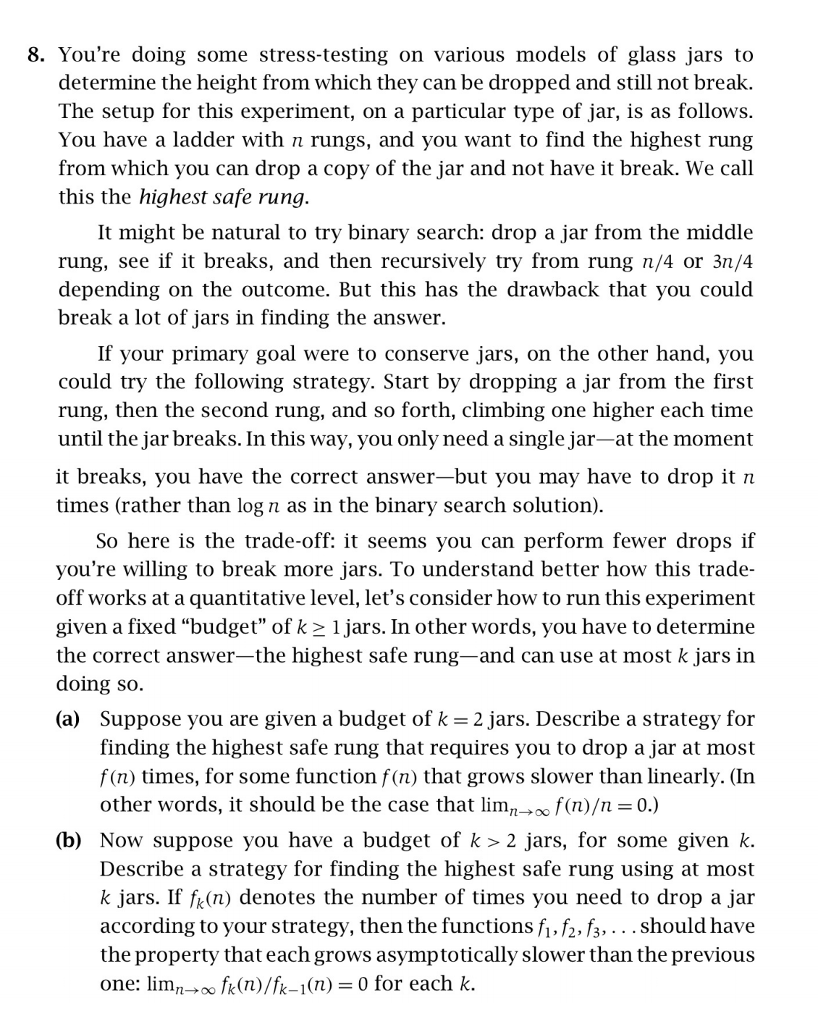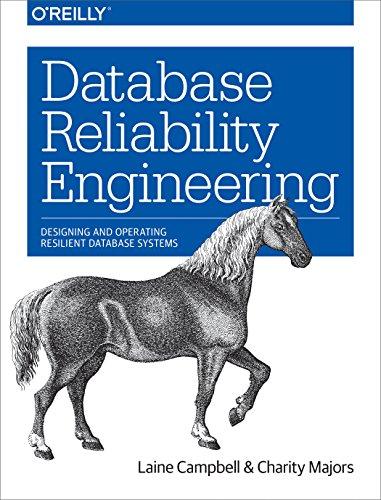
8. You're doing some stress-testing on various models of glass jars to determine the height from which they can be dropped and still not break. The setup for this experiment, on a particular type of jar, is as follows. You have a ladder with n rungs, and you want to find the highest rung from which you can drop a copy of the jar and not have it break. We call this the highest safe rung. It might be natural to try binary search: drop a jar from the middle rung, see if it breaks, and then recursively try from rung n/4 or 3n/4 depending on the outcome. But this has the drawback that you could break a lot of jars in finding the answer. If your primary goal were to conserve jars, on the other hand, you could try the following strategy. Start by dropping a jar from the first rung, then the second rung, and so forth, climbing one higher each time until the jar breaks. In this way, you only need a single jar-at the moment it breaks, you have the correct answer-but you may have to drop it n times (rather than log n as in the binary search solution). So here is the trade-off: it seems you can perform fewer drops if you're willing to break more jars. To understand better how this trade- off works at a quantitative level, let's consider how to run this experiment given a fixed "budget" of k2 1jars. In other words, you have to determine the correct answer-the highest safe rung-and can use at most k jars in doing so (a) Suppose you are given a budget of k - 2 jars. Describe a strategy for finding the highest safe rung that requires you to drop a jar at most f (n) times, for some function f(n) that grows slower than linearly. (In other words, it should be the case that lim, -.o f(n) 0.) (b) Now suppose you have a budget of k> 2 jars, for some given k. Describe a strategy for finding the highest safe rung using at most k jars. If fk(n) denotes the number of times you need to drop a jar according to your strategy, then the functions fl , f2,.. should have the property that each grows asymptotically slower than the previous one: limf()/fk-i(n) 0 for each k







